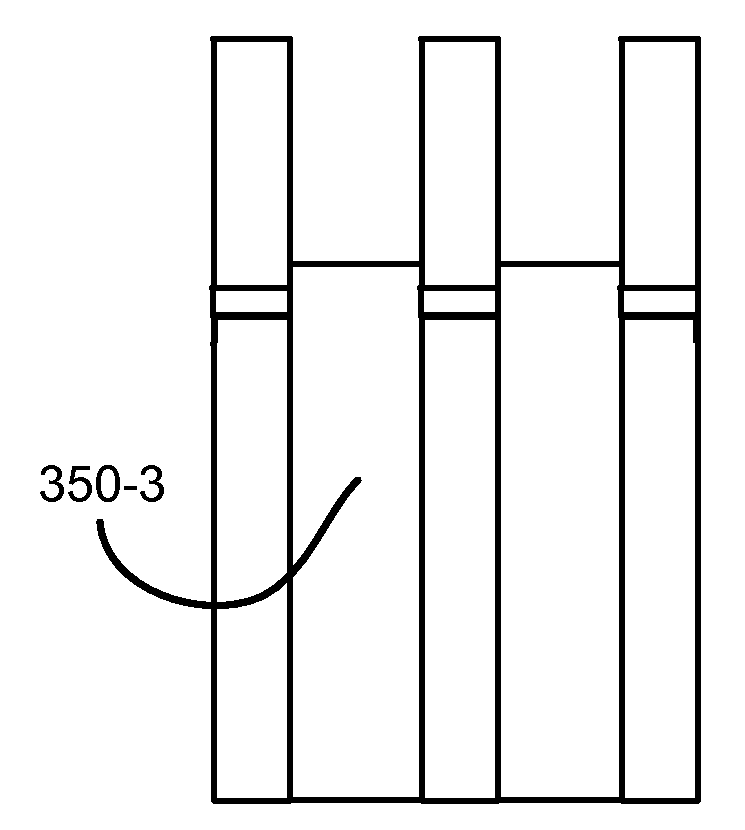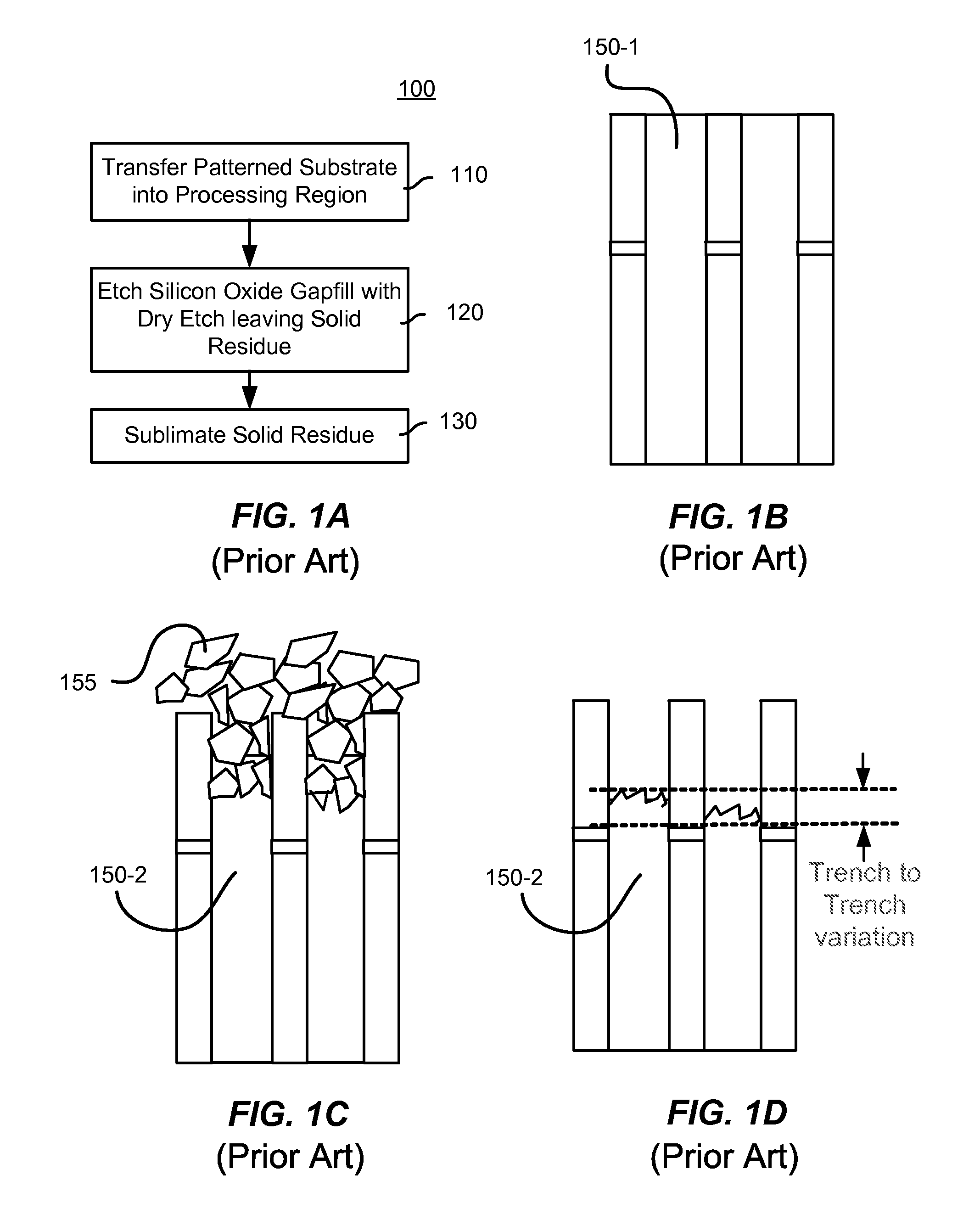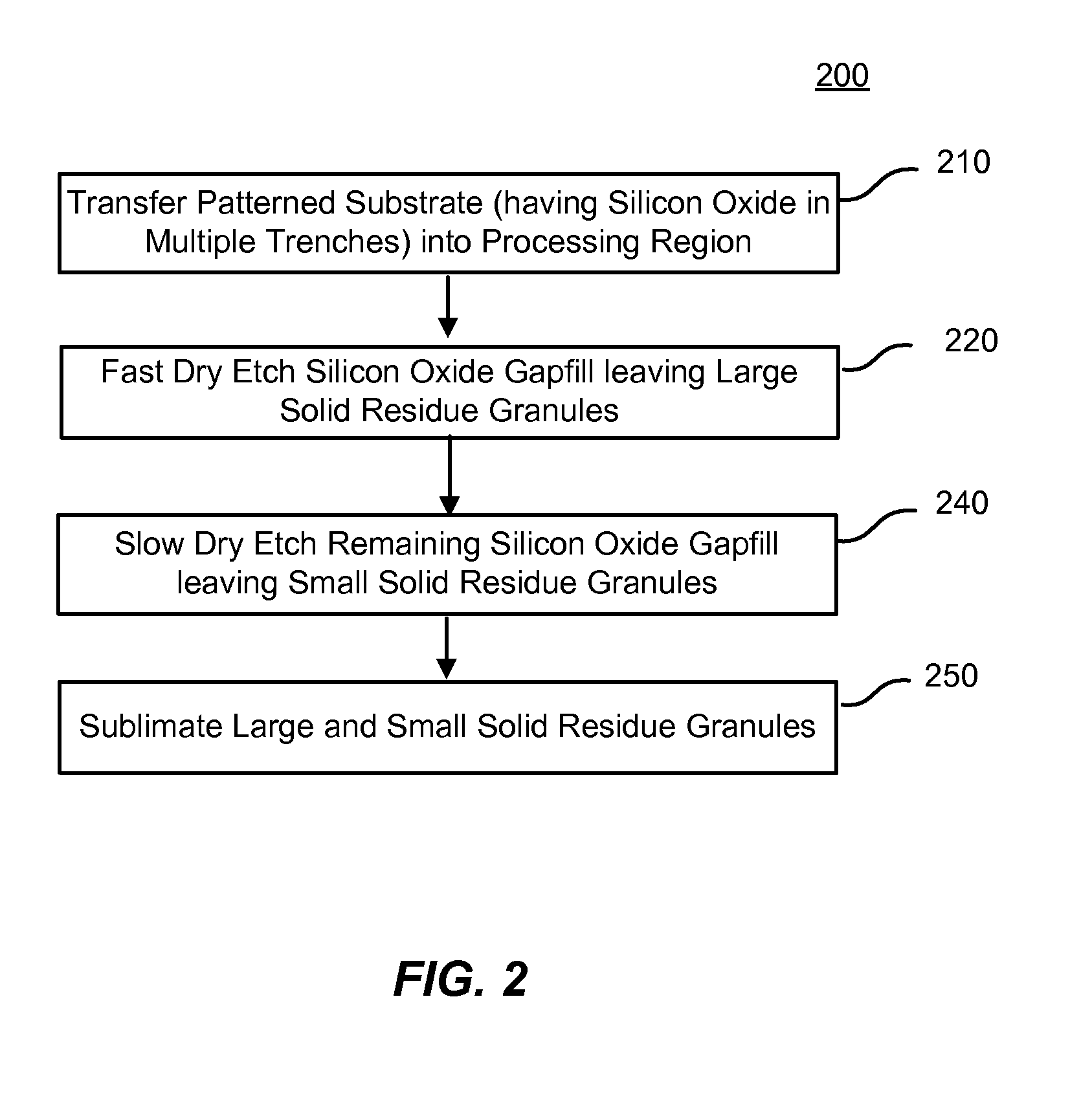Uniform dry etch in two stages
a technology of dry etching and dry etching, which is applied in the direction of basic electric elements, semiconductor/solid-state device manufacturing, electric devices, etc., can solve the problem of not readily etching silicon
- Summary
- Abstract
- Description
- Claims
- Application Information
AI Technical Summary
Benefits of technology
Problems solved by technology
Method used
Image
Examples
Embodiment Construction
[0017]A method of etching silicon oxide from a multiple trenches is described which allows more homogeneous etch rates among trenches. The surfaces of the etched silicon oxide within the trench following the etch may also be smoother. The method includes two dry etch stages followed by a sublimation step. The first dry etch stage removes silicon oxide quickly and produces large solid residue granules. The second dry etch stage remove silicon oxide slowly and produces small solid residue granules in amongst the large solid residue granules. Both the small and large solid residue are removed in the ensuing sublimation step. There is no sublimation step between the two dry etch stages.
[0018]Siconi™ etch processes are an example of a dry etch process and have used a hydrogen source such as ammonia (NH3) in combination with a fluorine source such as nitrogen trifluoride (NF3). The combination flows into a remote plasma system (RPS) and the plasma effluents created therein are flowed into...
PUM
 Login to View More
Login to View More Abstract
Description
Claims
Application Information
 Login to View More
Login to View More - R&D
- Intellectual Property
- Life Sciences
- Materials
- Tech Scout
- Unparalleled Data Quality
- Higher Quality Content
- 60% Fewer Hallucinations
Browse by: Latest US Patents, China's latest patents, Technical Efficacy Thesaurus, Application Domain, Technology Topic, Popular Technical Reports.
© 2025 PatSnap. All rights reserved.Legal|Privacy policy|Modern Slavery Act Transparency Statement|Sitemap|About US| Contact US: help@patsnap.com



